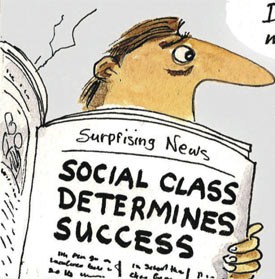Motivation is the state of an organism in pursuit of a goal. Motivation can be characterized by different degrees or levels. Thus, it is meaningful to say someone is highly or lowly motivated with respect to their pursuit or avoidance of an object.
Motivation may be measured in different ways. We can observe people and animals in pursuit of visible goals like the speed of running toward a finish line, the time spent trying to solve a problem (level of engagement), or the time spent on a number of activities considered relevant to success as in winning an election or an award.
A college student who is highly motivated to get into a graduate school program may be observed to spend a great deal of time studying, earn high scores on classroom tests, spend time collecting information about graduate schools, and participate in research expected of successful graduate students.
Leaders may engage in motivation when they attempt to encourage people to work together in pursuit of organizational goals and objectives.
Biological factors like hormones and cardiovascular activity reflect degrees of motivation.
Self-report of motivation is not a reliable predictor of behavior. Some goals like losing weight or increasing exercise may be endorsed at highly important and a person may present as highly motivated but the actual behavior may not result in significant movement toward the expressed goal.
Motive
In psychology, a motive is a biopsychological state of arousal that activates an organisms pursuit of a goal. Primary motives, also called physiological motives, include thirst and hunger. We may also speak of needs as in the need to eat, drink, or sleep.
Motive is sometimes used to refer to the reason that explains why organisms behave as they do. A person may state a motive and observers may infer motives based on some sort of evidence like a pattern of nonverbal behavior, verbal statements, or writings online.
Intrinsic and Extrinsic Motivation
Intrinsic motivation is the goal-directed activity energized by the pleasure obtained from particpating in the activity in contrast to rewards or reinforcers external to the activity such as money or applause.
Extrinsic motivation is the goal-directed activity energized by an incentive external to the activity itself such as money, trophies, awards, and so forth.
Key words in this post
Motive, motivation, intrinsic motivation, extrinsic motivation
Cite this post
Sutton, G.W. (2020, December 30). Motivation, motive, and psychology. Psychology Concepts and Theories https://suttonpsychology.blogspot.com/2020/12/motivation-motive-and-psychology.html
Links to Connections
Checkout My Page www.suttong.com
My Books AMAZON and GOOGLE STORE
FOLLOW me on FACEBOOK Geoff
W. Sutton TWITTER @Geoff.W.Sutton
PINTEREST www.pinterest.com/GeoffWSutton
Articles: Academia Geoff
W Sutton ResearchGate
Geoffrey W Sutton




